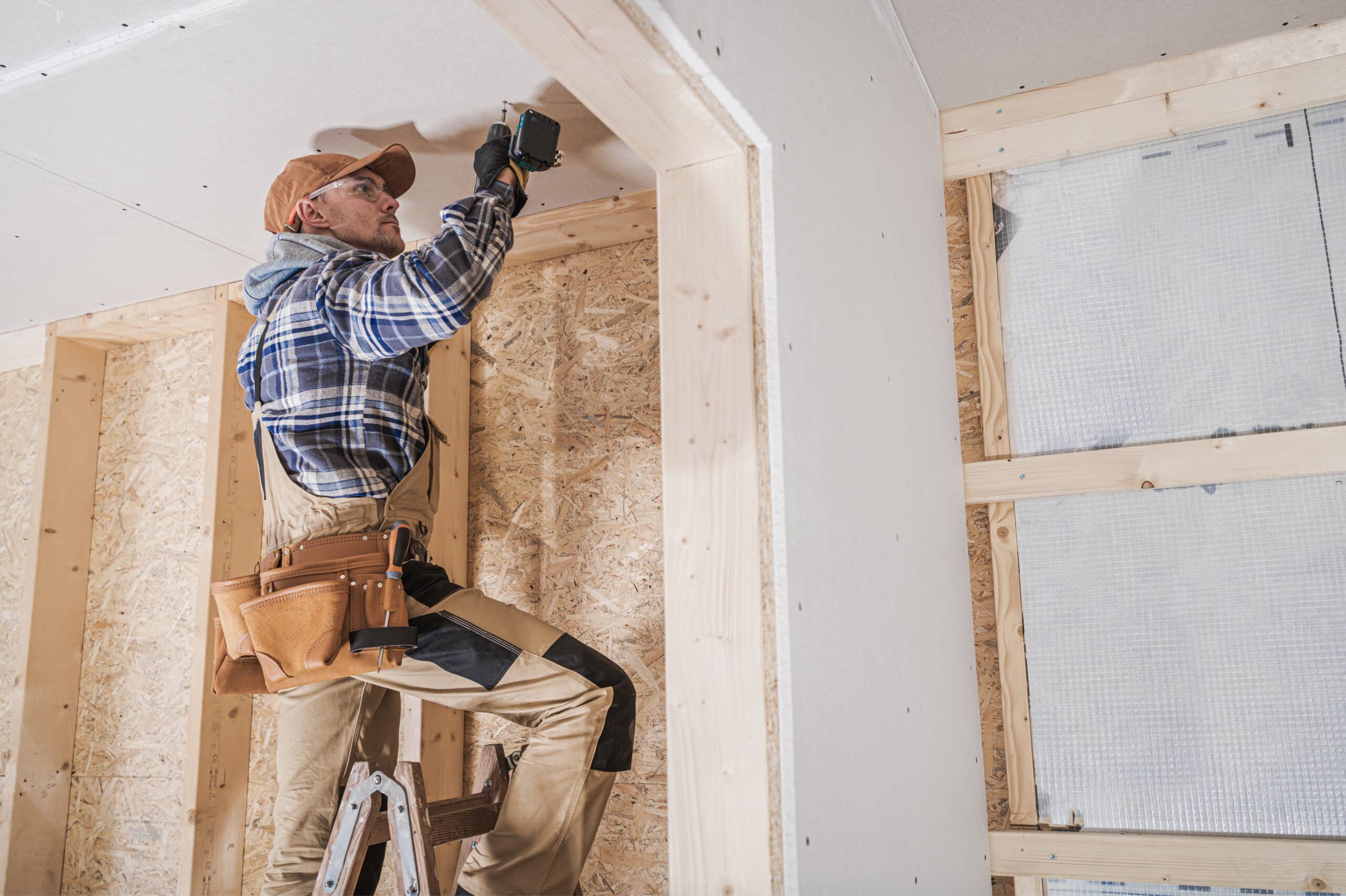Budget-friendly Drywall Repair Options for Your Fort Worth Building
Budget-friendly Drywall Repair Options for Your Fort Worth Building
Blog Article
Drywall Setup Made Easy: Tips for Perfect Results
Drywall installation is usually regarded as an overwhelming task, yet with the ideal method and expertise, it can end up being a manageable venture. Understanding methods for reducing, hanging, and finishing drywall can dramatically impact the result.
Picking the Right Products
Picking the ideal products for drywall setup is important to accomplishing a long lasting and aesthetically pleasing surface. drywall installation. The primary element, drywall sheets, generally can be found in various densities, with 1/2-inch sheets being typical for interior walls. For areas calling for extra wetness resistance, such as kitchens or washrooms, take into consideration utilizing eco-friendly board or concrete board, which are specially developed to hold up against moisture

In addition, picking the appropriate bolts-- either nails or screws-- is essential for protecting the drywall to the framing. Drywall screws are typically favored for their holding power and decreased risk of standing out. Think about the finishing touches such as guide and paint, which not only improve the appearance but additionally shield the drywall from dampness and wear.
Preparing the Setup Area
Before starting the drywall installation procedure, it is important to prepare the installment area extensively. A clean work area reduces the threat of damage to existing products and permits for efficient activity throughout installment.
Next, evaluate the walls and ceiling for any kind of imperfections, such as fractures, openings, or mold and mildew. Address these issues beforehand; spot any kind of damages and enable enough time for repairs to dry. Furthermore, make certain that electrical outlets, buttons, and pipes are properly positioned and represented, as this will certainly affect drywall positioning.
Think about the environmental problems. A steady temperature level and moisture level are crucial for ideal bond and efficiency of the drywall products. Utilize a dehumidifier or heater to create suitable conditions. if necessary.
Trimming and Hanging Drywall
The trick to reliable drywall installment hinges on the specific cutting and dangling of the panels. Begin by gauging the area precisely, taking into account any blockages such as electric outlets or home windows. Make use of a straight side and an energy knife to score the drywall along your dimensions, after that snap it along the scored line for a tidy break. For even more detailed cuts, such as around electrical outlets, a drywall saw can be used for precision.

Always function from the top down and left to right, making certain that you maintain a staggered pattern to improve security. Correctly hanging the drywall sets the structure for a smooth finish, eventually leading to remarkable cause your drywall project.
Taping and Mudding Strategies
While appropriate cutting and dangling of drywall sets the stage, the following essential step entails mastering taping and mudding techniques to make sure a seamless surface. Insulation is important for strengthening joints and protecting against cracks; it includes installing tape right into the used joint compound (mud) Begin with a top quality fiberglass or paper tape, using the tape over the joint and pushing it into the wet weblink mud using a taping knife, making sure no air bubbles stay.
As soon as the tape remains in place, apply a thin layer of joint compound over the tape, feathering the sides to create a smooth transition to the drywall surface area. Allow this layer to dry totally before sanding it lightly to eliminate imperfections. Repeat this process, applying additional layers of mud as necessary-- generally 2 to 3 layers-- while slowly broadening the application location with each layer to accomplish a seamless look.
After the final coat dries, sand the surface with a fine-grit sandpaper till smooth. drywall repair. Keep in mind to use a mask during sanding to prevent inhaling dust particles. Mastering these taping and mudding techniques is critical for achieving a professional-quality coating in your drywall installation
Completing Touches for Excellence
Accomplishing a flawless drywall installation surpasses mudding and taping; it finishes in the completing touches that elevate the total look. These final steps are crucial in ensuring a professional-grade coating that improves the aesthetic appeals of your space.
Begin by fining sand the dried out joint compound to develop a smooth surface. Use a fine-grit sandpaper and a fining sand block or post sander for optimal control. Pay certain interest to edges and edges, as these locations have a tendency to require even more precise job. After sanding, wipe down the wall surfaces with a moist cloth to get rid of any dirt bits, making certain a clean surface area for paint.
Next, use a primer especially created for drywall. This step is important, as it assists secure the joint substance and provides an uniform base for the topcoat. When the guide dries, check for any blemishes, and retouch as required.
Conclusion
In final thought, successful drywall setup rests on the careful my website choice of materials, thorough prep work of the installation area, and specific execution of cutting and Discover More Here hanging methods. Proficiency of taping and mudding procedures is necessary for attaining a smooth coating. In addition, attention to completing touches, including priming and touch-ups, guarantees a professional-grade outcome. By sticking to these guidelines, the high quality of handiwork can be significantly enhanced, contributing to the general aesthetic and performance of the room.
Drywall installment is often perceived as a complicated task, yet with the best method and understanding, it can end up being a manageable endeavor.Selecting the appropriate materials for drywall setup is crucial to attaining a sturdy and cosmetically pleasing coating.Prior to beginning the drywall installation process, it is important to prepare the installation area thoroughly. Understanding these taping and mudding strategies is essential for accomplishing a professional-quality surface in your drywall installation.
In conclusion, effective drywall setup hinges on the mindful choice of materials, thorough prep work of the installment location, and accurate implementation of reducing and hanging techniques.
Report this page